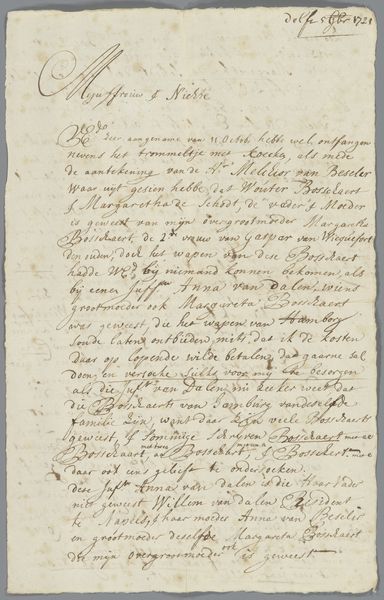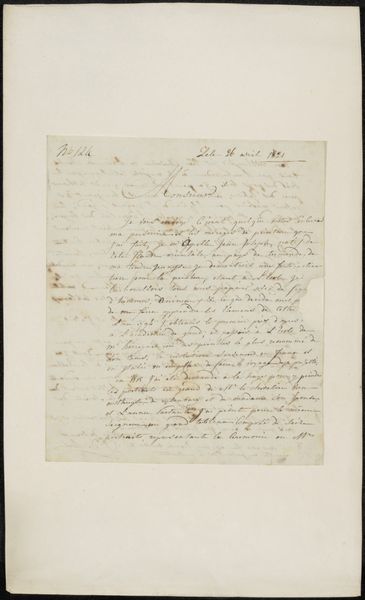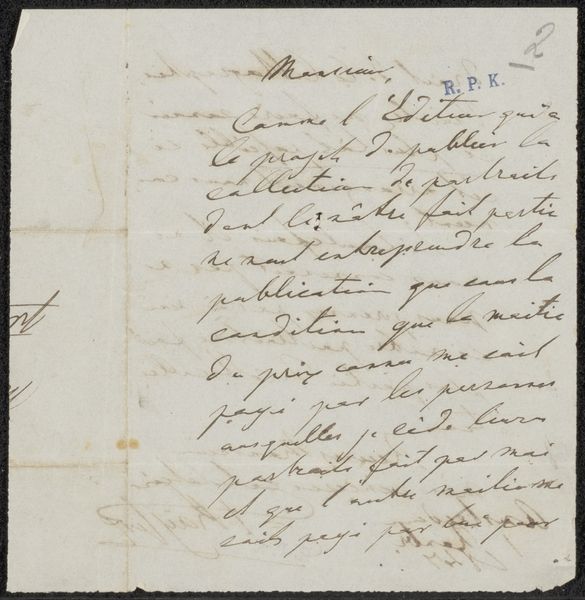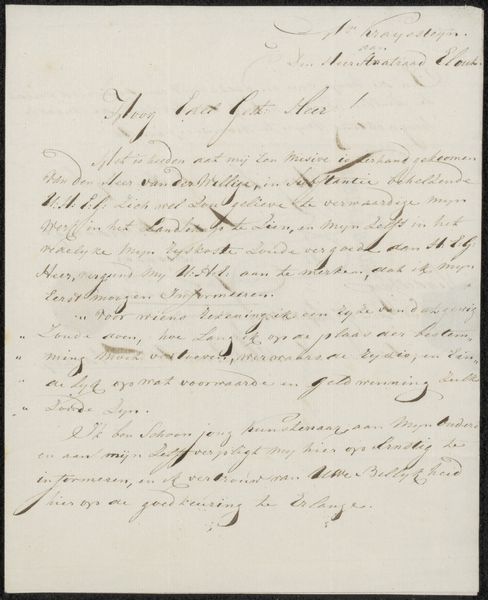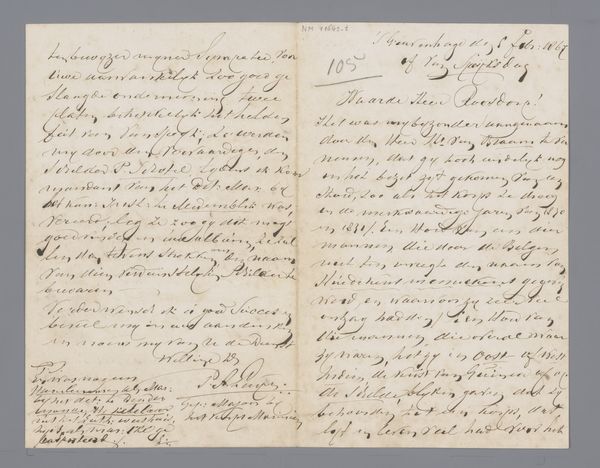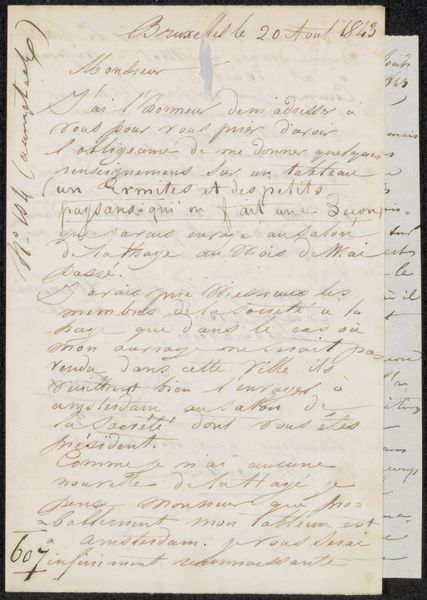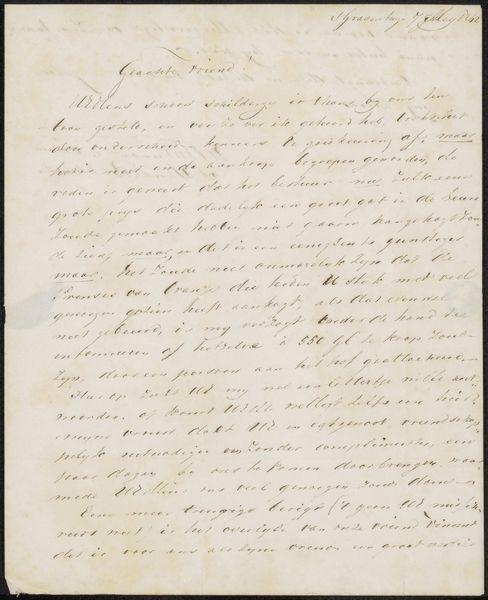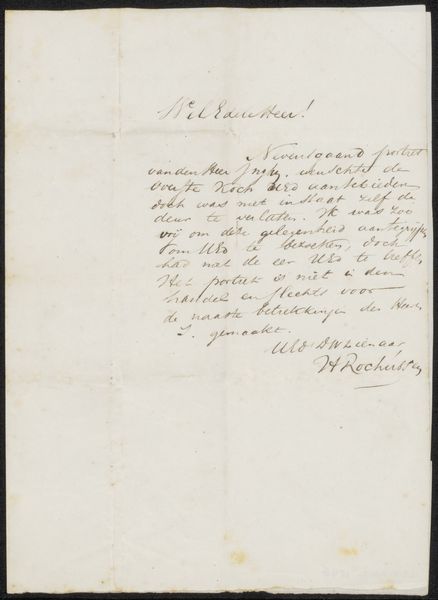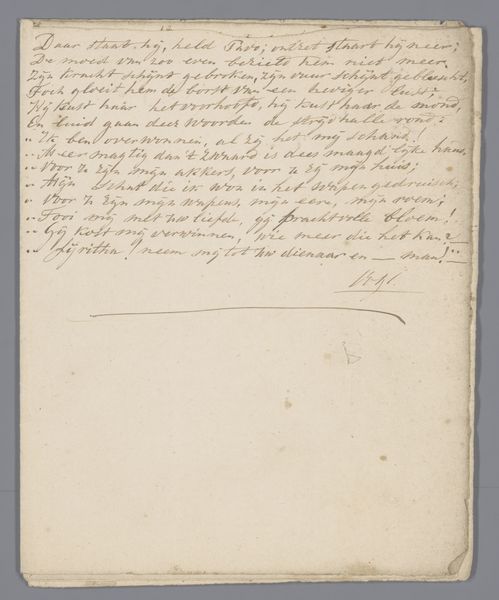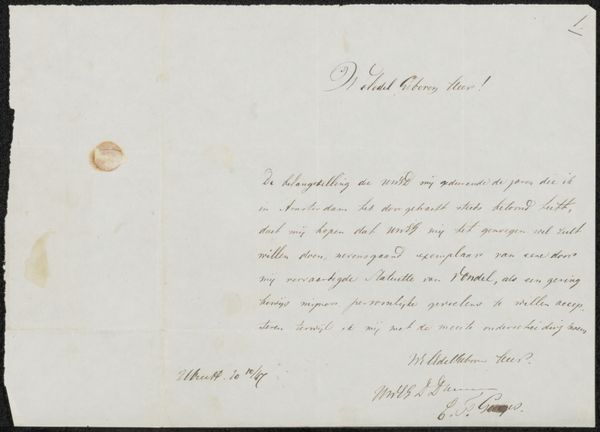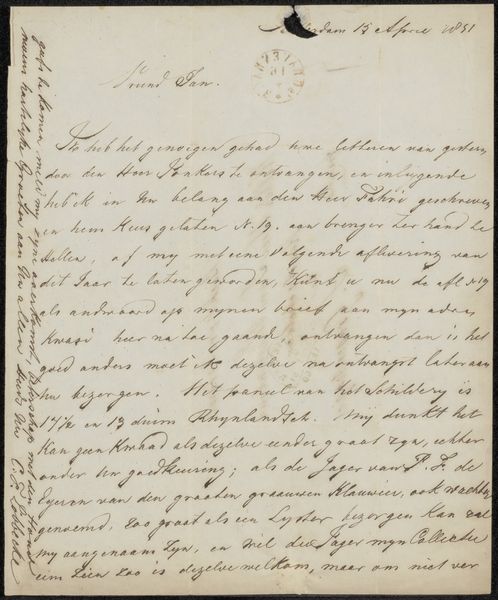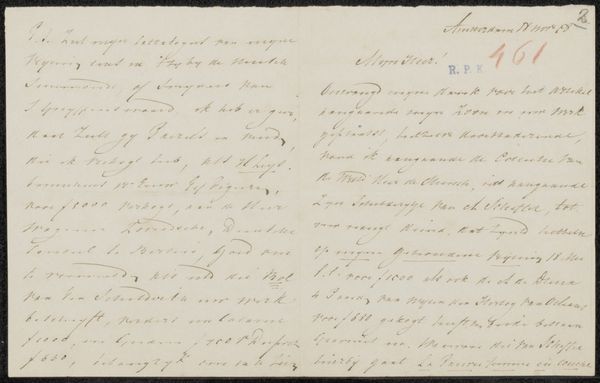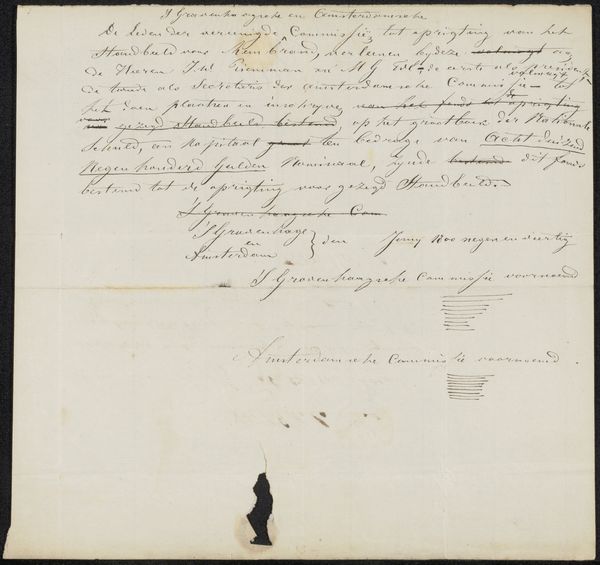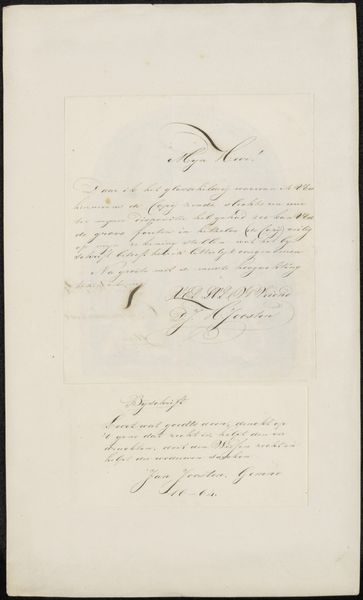
drawing, ink, pencil
#
portrait
#
drawing
#
caricature
#
ink
#
pencil
#
academic-art
Copyright: Public Domain
Curator: This rather curious item is entitled "New Year's Letter from the Artist with an Obscene Marginal Sketch," created in 1865 by Fritz Bamberger. It’s currently held in the Städel Museum collection. It’s rendered with pencil and ink on paper. Editor: Well, that’s certainly… something. The letter itself seems almost formal, with elegant script, and then bam! That sketch at the bottom is unexpected. What do we make of that? Curator: Indeed. Consider this: letters at this time served multiple functions, both personal and semi-public. Bamberger was corresponding within an established circle, so this "obscene sketch" might function as a form of playful critique or commentary within that group's shared context. The use of caricature also situates it within a longer tradition of satirical art. Editor: So, almost a kind of inside joke? And given the timeframe, shortly after the failed 1848 revolution in Germany, perhaps the sketch could also be read as a critique of authority or established social order. After all, visual humor has long served as a subversive tool. The letter might signal that in his close personal correspondence, he adopted a rebellious attitude, which remained discreet in his public work to secure the favor of powerful patrons. Curator: Exactly! Bamberger himself came from a family of Jewish merchants and, despite achieving some recognition, likely still experienced certain societal limitations. This kind of bawdy humor might also have served as a form of release, or even a means of mocking those same societal norms. Editor: The stark contrast between the formal letter and the vulgar drawing is really striking. It challenges conventional interpretations. Who gets to decide what’s appropriate or not? What are we willing to accept within established institutions? Curator: And how can a personal touch re-insert the messy truths about living within systems? This letter offers us an important counterpoint in considering Bamberger’s larger artistic output, urging us to view the work within the framework of political realities. Editor: I appreciate that a seemingly innocuous item can actually reveal the tensions that underpin societal norms. I like how art can uncover more layers of understanding.
Comments
No comments
Be the first to comment and join the conversation on the ultimate creative platform.
